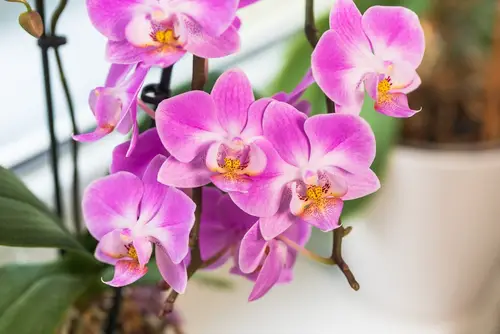Small brown spots on orchid leaves can be a common issue for orchid growers. While some spots may not be harmful to the plant, others can indicate a problem that needs to be addressed. Identifying the cause of the spots is the first step in determining the appropriate treatment.
There are several common causes of brown spots on orchid leaves, including fungal and bacterial infections, pests and diseases, and environmental factors.
Different types of orchids may also be more susceptible to certain issues than others. It’s important to properly identify the type of orchid and its specific needs in order to provide the best care and prevent issues from arising.
If left untreated, brown spots on orchid leaves can lead to further damage and even death of the plant. However, with proper care and attention, many issues can be resolved and the plant can thrive once again.
By understanding the causes and treatments of small brown spots on orchid leaves, growers can ensure the health and longevity of their plants.
Key Takeaways
- Identifying the cause of brown spots is crucial in determining the appropriate treatment for orchids.
- Different types of orchids may be more susceptible to certain issues, so it’s important to properly identify the plant and its specific needs.
- With proper care and attention, many issues with brown spots on orchid leaves can be resolved, ensuring the health and longevity of the plant.
Also don’t miss:
- Small Brown Spots on Monstera Leaves
- Rhododendron Leaves Turning Yellow with Brown Spots
- Pot Leaves Turning Yellow with Brown Spots
Identifying Small Brown Spots on Orchid Leaves
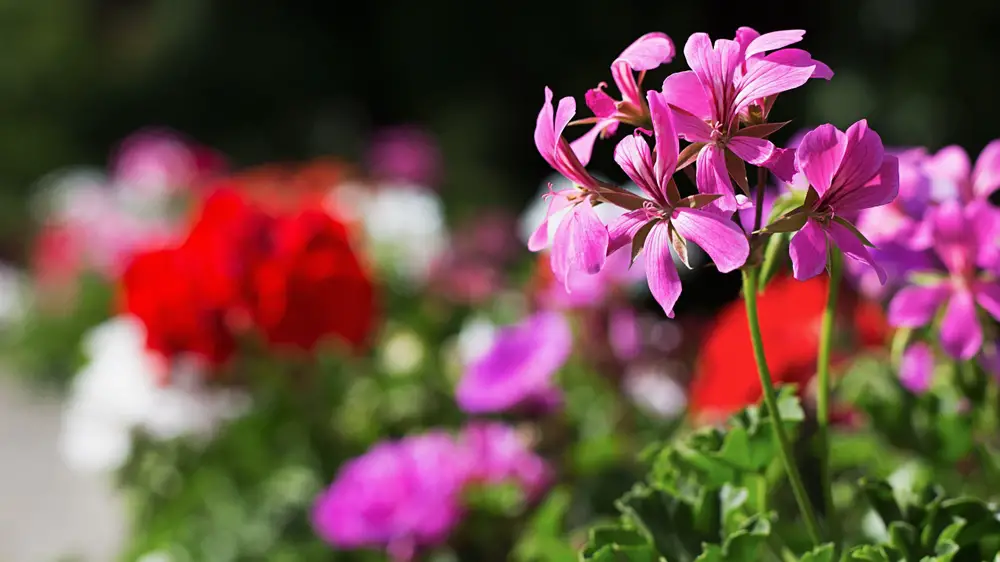
Small brown spots on orchid leaves can be a sign of a bacterial or fungal infection. It is important to identify the cause of the spots to treat the issue effectively. Here are some ways to identify small brown spots on orchid leaves:
Size, Shape, and Color
The size, shape, and color of the spots can vary depending on the type of infection. Brown spots caused by bacterial infections are usually small and water-soaked.
Over time, the spots can enlarge and turn dark brown or black. Fungal infections can cause brown spots with yellow halos or necrotic spots with brown centers and yellow borders.
Location on the Leaves
The location of the brown spots on the leaves can also provide clues about the type of infection. Bacterial infections tend to start at the tips or edges of the leaves and spread inward. Fungal infections can start anywhere on the leaves and may spread to other parts of the plant.
Other Types of Spots
In addition to small brown spots, orchid leaves can develop other types of spots. White spots can be a sign of mealybugs or scale insects. Black spots can indicate a fungal infection or sunburn. Yellow spots can be a sign of nutrient deficiencies or spider mites.
Inspection and Diagnosis
Inspecting the orchid leaves regularly is important to catch any issues early. If small brown spots are detected, it is recommended to take a close look at the spots and the surrounding area.
If the spots are caused by a bacterial or fungal infection, it is best to remove the affected leaves and treat the plant with a fungicide or bactericide.
Small Brown Spots on Orchid Leaves – 6 Common Problems
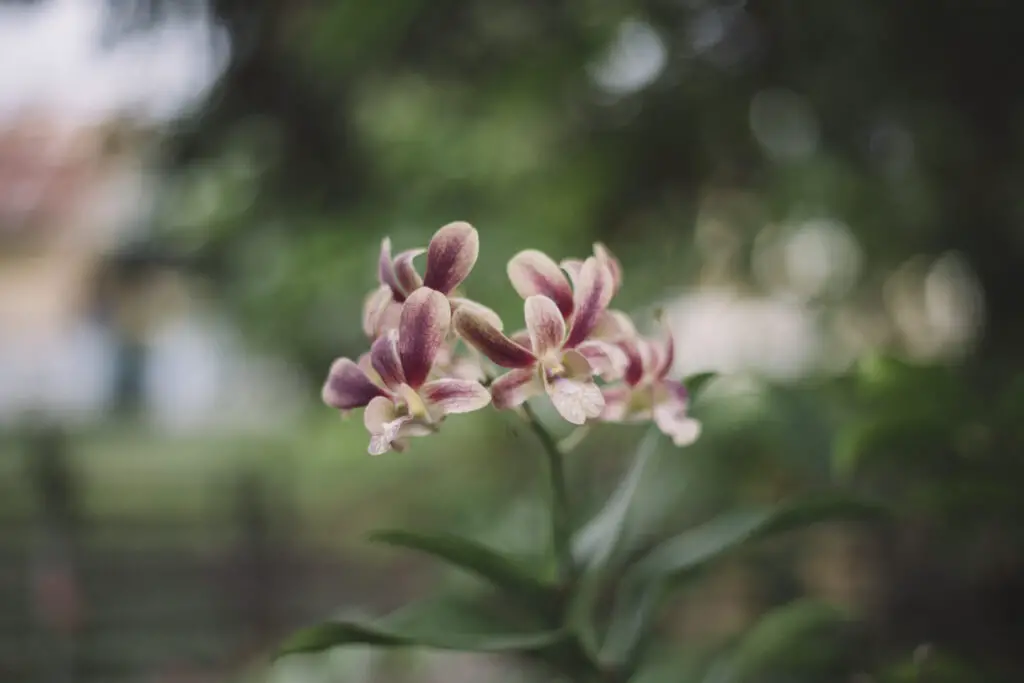
Brown spots on orchid leaves can be caused by a variety of factors. Here are some of the most common causes:
1. Bacterial Infection
One of the most common causes of brown spots on orchid leaves is bacterial infection. There are two types of bacteria that can cause brown spots to appear in orchid leaves, leading to two different types of leaf rot.
The first type is called Erwinia and it causes soft rot, which can quickly spread throughout the plant if left untreated. The second type is called Pseudomonas and it causes brown spot, which can also spread throughout the plant and cause extensive damage if left untreated.
2. Fungal Infection
Fungal infections can also cause brown spots on orchid leaves. Botrytis, black rot, and powdery mildew are some of the most common fungal diseases that can affect orchids. These diseases can cause brown or black spots on the leaves, as well as other symptoms such as wilting and yellowing.
3. Overwatering
Overwatering is another common cause of brown spots on orchid leaves. When orchids are overwatered, their roots are unable to get the oxygen they need and will start to rot. This can lead to brown spots on the leaves, as well as other symptoms such as wilting and yellowing.
4. Underwatering
Underwatering can also cause brown spots on orchid leaves. When orchids don’t get enough water, their leaves can become dehydrated and start to turn brown. This is especially common during hot and dry weather or when the humidity levels are low.
5. High Humidity
High humidity can also be a contributing factor to brown spots on orchid leaves. When the humidity levels are too high, it can create a damp environment that is perfect for bacterial and fungal growth. This can lead to brown spots on the leaves, as well as other symptoms such as wilting and yellowing.
6. Cool, Damp Weather
Cool, damp weather can also contribute to brown spots on orchid leaves. When orchids are exposed to cool and damp conditions for too long, it can create an environment that is perfect for fungal growth. This can lead to brown spots on the leaves, as well as other symptoms such as wilting and yellowing.
Types of Orchids and Their Susceptibility
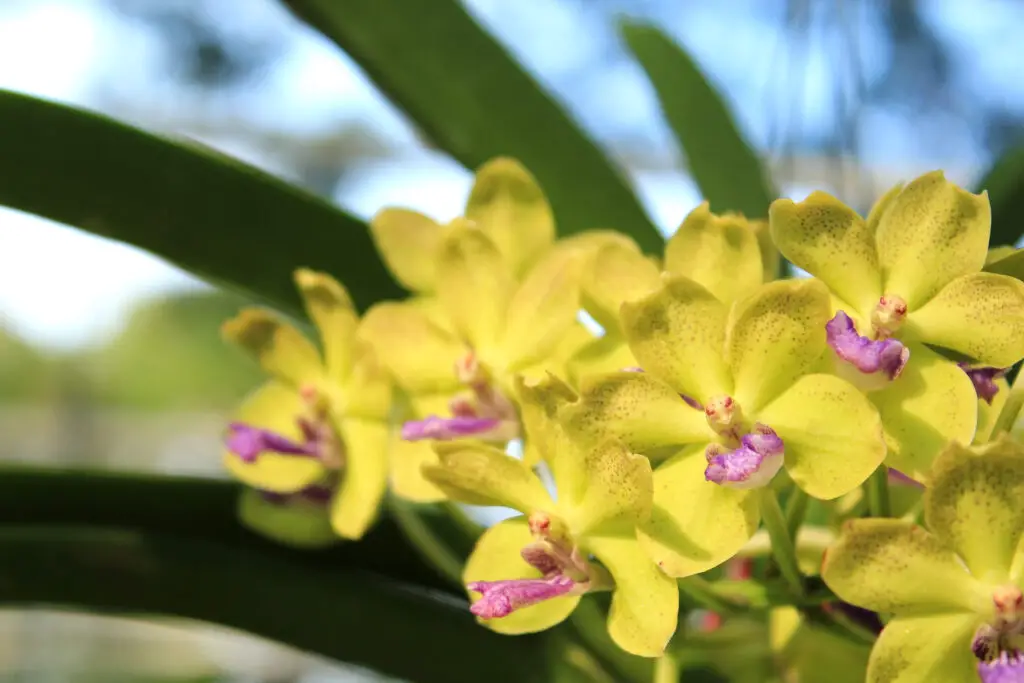
Different types of orchids have varying levels of susceptibility to small brown spots on their leaves. Some orchids are more prone to developing these spots than others. Here are some of the most common orchid types and their susceptibility to small brown spots:
1. Phalaenopsis Orchids
Phalaenopsis orchids are one of the most popular orchids grown in homes and gardens. They are also known as “moth orchids” because of their resemblance to moths. Phalaenopsis orchids are susceptible to small brown spots on their leaves, especially if they are exposed to too much direct sunlight or if they are overwatered.
2. Cattleya Orchids
Cattleya orchids are known for their large, showy flowers and are often used in corsages and wedding bouquets. They are less susceptible to small brown spots on their leaves than other orchid types, but they can still develop these spots if they are not properly cared for.
3. Dendrobium Orchids
Dendrobium orchids are native to Asia and are known for their long, thin stems and delicate flowers. They are moderately susceptible to small brown spots on their leaves, especially if they are exposed to too much direct sunlight or if they are overwatered.
4. Vanda Orchids
Vanda orchids are prized for their large, colorful flowers and are often used in floral arrangements. They are less susceptible to small brown spots on their leaves than other orchid types, but they can still develop these spots if they are not properly cared for.
5. Cymbidium Orchids
Cymbidium orchids are native to Asia and are known for their large, showy flowers and long, thin leaves. They are moderately susceptible to small brown spots on their leaves, especially if they are exposed to too much direct sunlight or if they are overwatered.
6. Oncidium Orchids

Oncidium orchids are known for their delicate, colorful flowers and are often used in floral arrangements. They are less susceptible to small brown spots on their leaves than other orchid types, but they can still develop these spots if they are not properly cared for.
7. Epidendrum Orchids
Epidendrum orchids are native to South America and are known for their long, thin stems and small, delicate flowers. They are moderately susceptible to small brown spots on their leaves, especially if they are exposed to too much direct sunlight or if they are overwatered.
8. Odontoglossum Orchids
Odontoglossum orchids are native to South America and are known for their large, colorful flowers and long, thin leaves. They are moderately susceptible to small brown spots on their leaves, especially if they are exposed to too much direct sunlight or if they are overwatered.
Fungal and Bacterial Infections
Small brown spots on orchid leaves are often caused by fungal or bacterial infections. Fungal infections can cause leaf rot, while bacterial infections can cause brown spots and rot. These infections can be caused by a variety of factors, including overwatering, poor air circulation, and high humidity.
Fungal infections are caused by spores that can be present in the soil, on plant debris, or in the air. These spores can infect plants through wounds or natural openings, such as stomata. Fungal diseases such as black spot, rust, and anthracnose can cause small brown spots on orchid leaves. These spots can grow larger and eventually cause the leaf to rot.
Bacterial infections are caused by bacteria that can enter the plant through wounds or natural openings. Bacterial brown spot and bacterial rot are two common bacterial diseases that can cause small brown spots on orchid leaves. These spots can grow larger and eventually cause the leaf to rot.
To treat fungal and bacterial infections, it is important to identify the specific disease and use the appropriate fungicide or bactericide. Fungicides are used to treat fungal diseases, while bactericides are used to treat bacterial diseases.
It is important to follow the instructions on the label when using fungicides or bactericides to ensure that they are used safely and effectively.
Prevention is key when it comes to fungal and bacterial infections. Maintaining proper air circulation, avoiding overwatering, and keeping humidity levels in check can help prevent these infections from occurring. Regularly inspecting plants for lesions or signs of infection can also help catch and treat infections early on.
Pests and Diseases
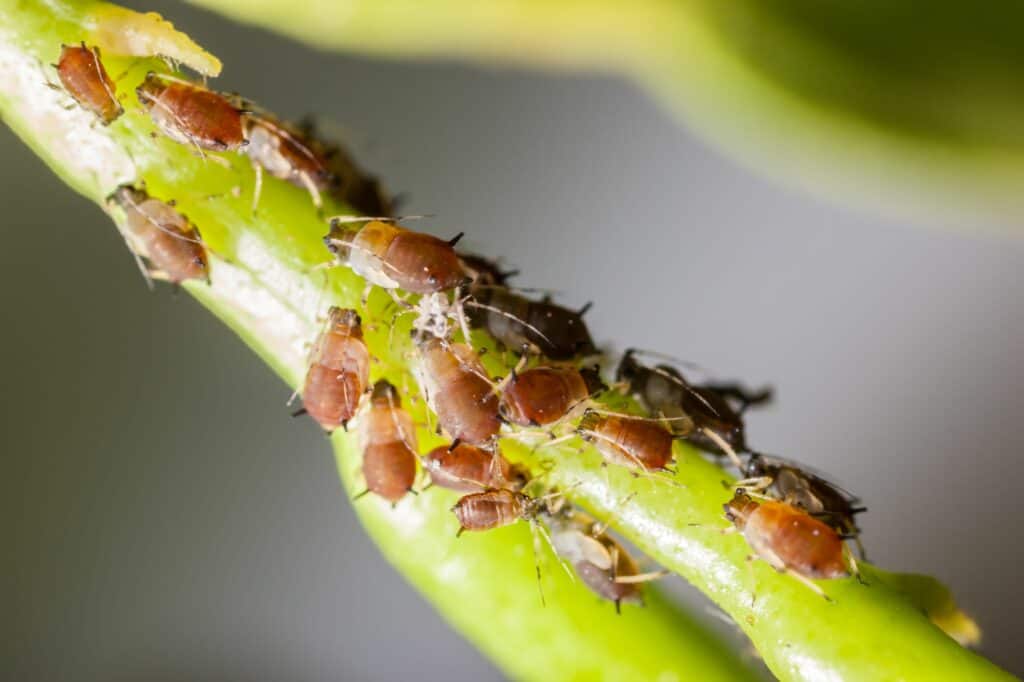
Orchids are susceptible to a variety of pests and diseases that can cause small brown spots on their leaves. These spots can be a sign of a bacterial infection, fungal disease, or pest infestation. It is important to identify the underlying cause of these spots to prevent further damage to the orchid.
Pests
Some common pests that can cause brown spots on orchid leaves include mealybugs, aphids, scale insects, and spider mites. These pests can cause yellow or thin spots on the leaves, and may also cause yellow halos or distorted veins.
To control these pests, it is important to maintain good sanitation practices and remove any infected leaves. Repotting the orchid can also help prevent further infestations.
Diseases
Bacterial infections can cause brown spots on orchid leaves, which may appear thick or have a powdery mildew-like appearance. Septoria is a fungal disease that can also cause brown spots on the leaves, which may have a yellow halo around them.
To prevent the spread of these diseases, it is important to maintain good sanitation practices and avoid exposing the orchid to drafts or extreme temperature changes.
Prevention
Preventing pests and diseases is the best way to avoid brown spots on orchid leaves. Maintaining good sanitation practices, such as regularly sterilizing gardening tools and supplies, can help prevent the spread of pests and diseases. Providing proper air circulation and avoiding overwatering can also help prevent these issues.
Environmental Factors and Care
Environmental factors play a crucial role in the health of orchids, including the appearance of small brown spots on their leaves. Proper care and maintenance can help prevent the occurrence of these spots and promote healthy growth.
One important factor to consider is air circulation. Orchids need good air circulation to prevent the growth of fungal infections. It is recommended to place orchids in an area with good air flow, such as near an open window or a fan. Growers should also avoid overcrowding plants, which can limit air circulation.
Another factor to consider is the growth of new leaves. Orchids produce new leaves throughout the year, and these leaves are more susceptible to damage from environmental factors. Growers should take care not to damage the crown of the plant when removing old leaves, as this can affect the growth of new leaves.
Proper photosynthesis is also important for the health of orchids. Growers should ensure that their plants receive adequate light, but not direct sunlight, which can cause sunburn.
Fertilizer can also be used to promote healthy photosynthesis, but growers should be careful not to over-fertilize, as this can lead to the accumulation of salts in the soil.
Pruning is another important aspect of orchid care. Dead or damaged leaves should be removed promptly to prevent the spread of disease. Growers should also prune back any aerial roots that have become too long, as these can become tangled and limit air circulation.
Finally, growers should take care when watering their orchids. It is recommended to water the roots, not the leaves, to prevent the growth of fungal infections. Watering should be done sparingly, allowing the soil to dry out slightly between waterings. In humid areas, growers may need to water less frequently to prevent over-watering.
Frequently Asked Questions

How to treat bacterial brown spot on orchids?
Bacterial brown spots on orchid leaves can be treated by increasing airflow, regulating temperature, and watering the roots instead of the leaves.
Sterilizing gardening tools and supplies regularly and inspecting orchids for signs of infection can also help prevent the spread of bacterial infections. If the infection is severe, it may be necessary to use a fungicide or bactericide to treat the affected orchids.
Why are there brown spots on my orchid leaves?
Brown spots on orchid leaves can be caused by a variety of factors, including bacterial or fungal infections, insect infestations, nutrient deficiencies, or environmental stressors such as extreme temperatures or humidity.
Identifying the underlying cause of the brown spots is important in determining the appropriate treatment.
What causes small brown spots on orchid leaves?
Small brown spots on orchid leaves can be caused by bacterial or fungal infections, insect damage, or physical damage to the leaves. Overwatering or underwatering can also cause small brown spots to appear on orchid leaves.
What are the little spots on my orchid leaves?
Little spots on orchid leaves can be caused by a variety of factors, including insect damage, fungal or bacterial infections, or physical damage to the leaves. Identifying the underlying cause of the spots is important in determining the appropriate treatment.
What are the small brown spots on my orchid flowers?
Small brown spots on orchid flowers can be caused by fungal or bacterial infections, insect damage, or physical damage to the flowers. It is important to identify the underlying cause of the spots in order to determine the appropriate treatment.
How do I get rid of brown spots on my orchid leaves?
The treatment for brown spots on orchid leaves depends on the underlying cause. In some cases, increasing airflow, regulating temperature, and watering the roots instead of the leaves can help prevent the spread of bacterial or fungal infections.
In other cases, it may be necessary to use a fungicide or bactericide to treat the affected orchids. Identifying the underlying cause of the brown spots is important in determining the appropriate treatment.

Hey, I’m Lisa and I’ve been an avid gardener for over 30 years. I love writing, talking and living in the garden! Feel free to connect with me on my socials below

